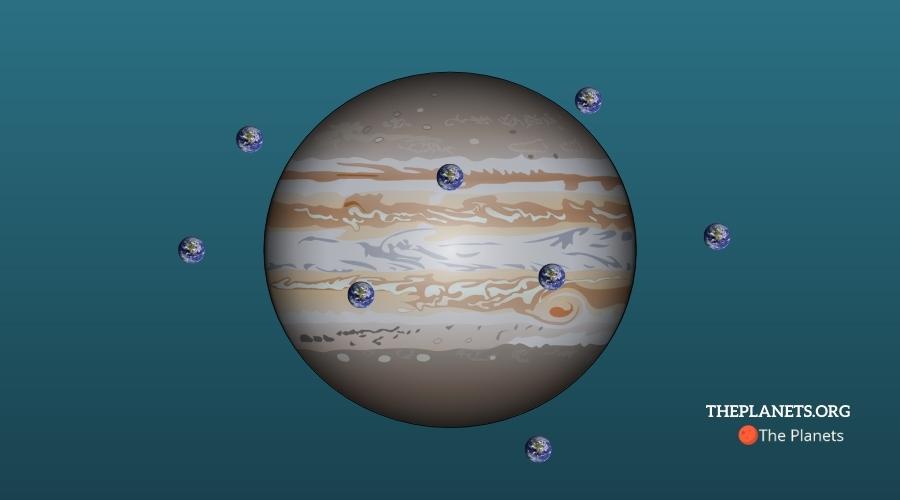
Have you ever found yourself looking at the sky and marveling at the size of the stars that you can see? Those stars are only a fraction of the size of most planets, especially Jupiter. Jupiter is the fifth planet from the sun and the largest planet. In terms of size alone, you could take all other planets in our solar system, place them inside Jupiter and still have some room leftover. The planet is also one of the two brightest in the sky, which makes it easy to see through a telescope. We’ll look at the size of Jupiter in relation to Earth and give you some other interesting facts about the planet in the following article.
Jupiter is Gaseous
Depending on where you live, you can step outside and instantly place your feet on the ground. That is because the Earth is solid. Even our lakes and oceans have bottoms with solid ground. Jupiter does not have a solid crust or any surface because it consists entirely of gas. This also explains why astronauts cannot land on the planet. The planet sometimes looks as it if has large stripes across the surface because of the white, red, yellow and brown clouds that cover it.
How Many Earths Could Fit in Jupiter?
In terms of size alone, Jupiter dwarfs Earth. If you saw the two planets sitting side by side, you might be amazed at how much larger Jupiter is than Earth. It would almost be like comparing a golf ball or a marble to a basketball. Jupiter has a mass equivalent to more than twice the mass of all other planets in the solar system and a mean radius that is more than 10 times the mean radius of Earth. You could fit up to 13 versions of our Earth inside Jupiter in terms of mass alone. If you looked at size rather than mass, Jupiter could hold more than 1,000 Earths.
Magnetic Fields and Gravitational Forces
Jupiter has a significantly different atmosphere and environment than Earth has. The gravitational pull of the planet is much stronger than what you experience on Earth. NASA scientists believe that this force is up to 2.4 times stronger than Earth’s force. This means that if you weighed 150 pounds and found a place to stand on Jupiter, you would weigh 360 pounds on the planet. Jupiter also has magnetic fields that are thousands of times stronger than the fields surrounding Earth.
Red Spot
Though Mars is the Red Planet, Jupiter has a large red spot around its southern hemisphere. You can see this spot in photos that satellites took in space. This spot is so large that more than three Earths could fit across it. If you lined up each version of Earth next to each other, it would take 3.5 planets to cover the red spot. This gives you an idea of how large Jupiter is in comparison to Earth.
Ranking the Planets
If you asked your parents a few years ago about which planet was the smallest, they would have told you, Pluto. Scientists downgraded the designation of Pluto in the past to a dwarf planet, which means that it no longer counts. Mercury now ranks as our solar system’s smallest planet. Mars is another small planet that has a diameter of around 50% the diameter of Earth. Earth and Venus are so similar in size that some refer to Venus as the Earth’s twin. Though Jupiter is the biggest planet, Saturn, Uranus and Neptune are all larger than Earth. You could fit hundreds of each of those planets inside Jupiter.
Gas Giant
Jupiter earned the nickname of the Gas Giant because it’s so large and comprised of gas. Scientists did not know the makeup of the planet until satellites and ships took photos and sent them back to research facilities. Those gases created the Great Red Spot, which is a red area that you can see in photos. Unless you view the planet in real-time, you might not realize that this spot consists of red and white gases swirling in a circular fashion similar to a storm. The large and impressive size of Jupiter allows more than 1,300 Earths and every planet in the solar system to fit inside it.